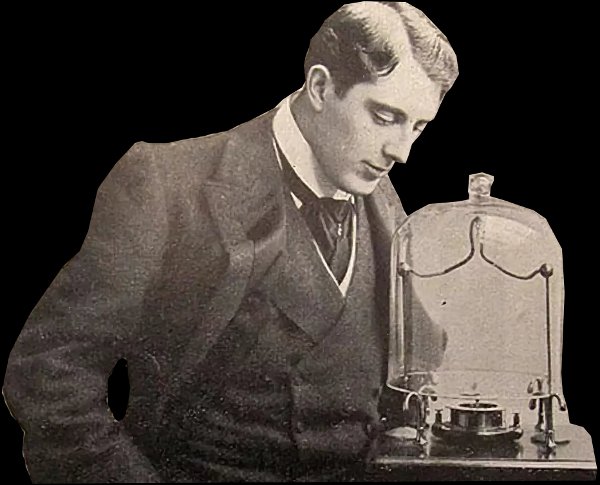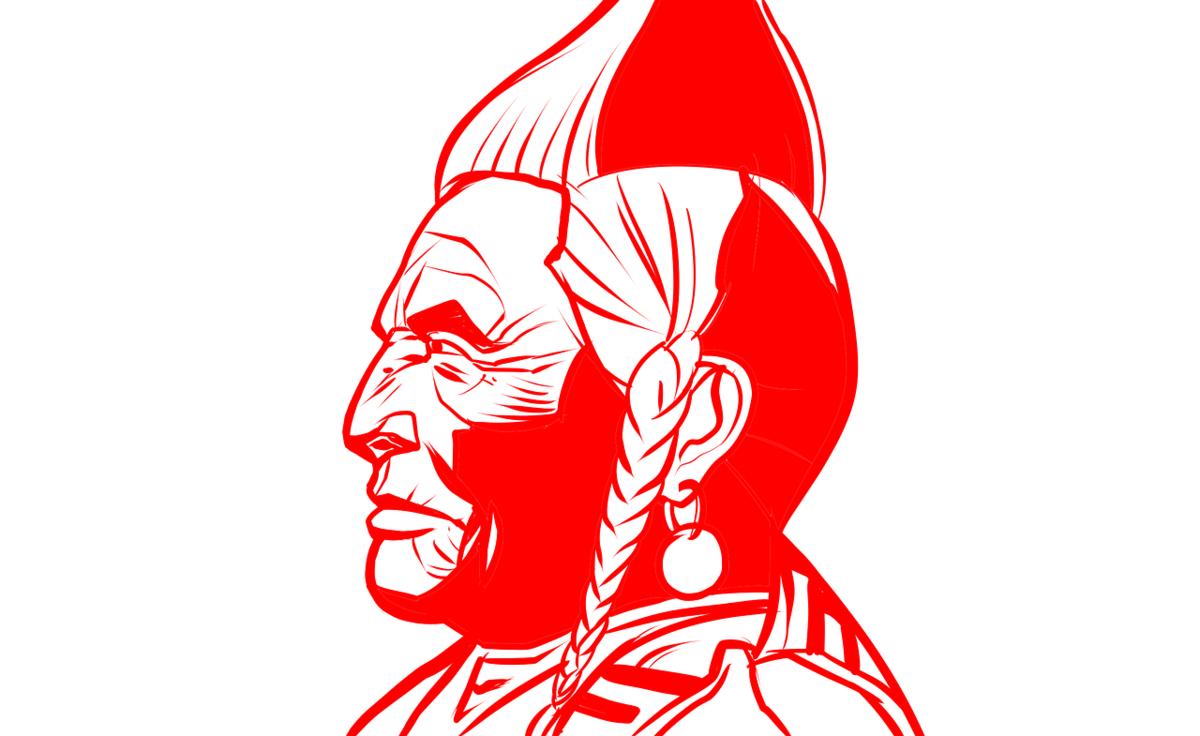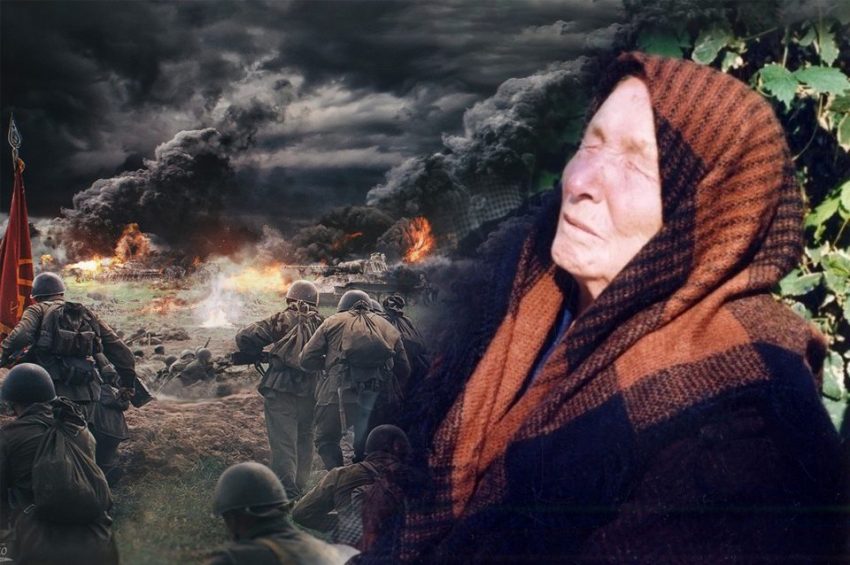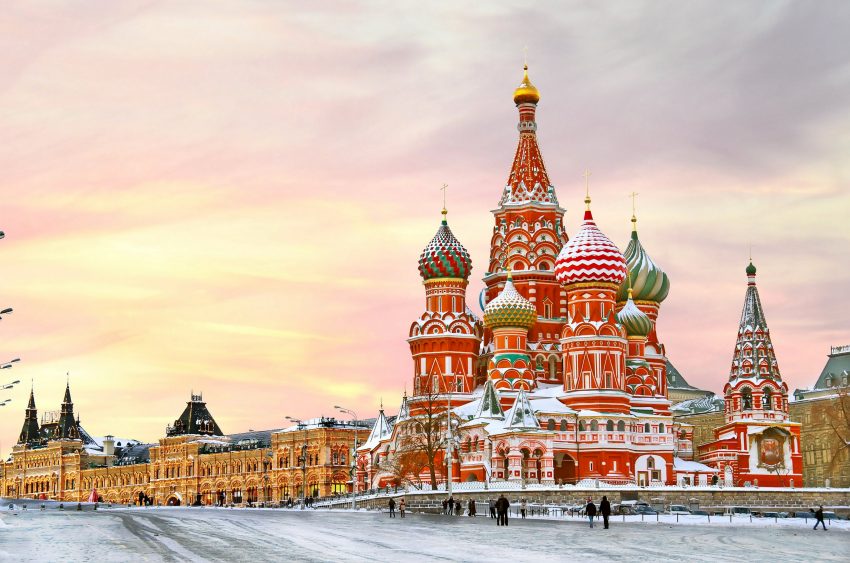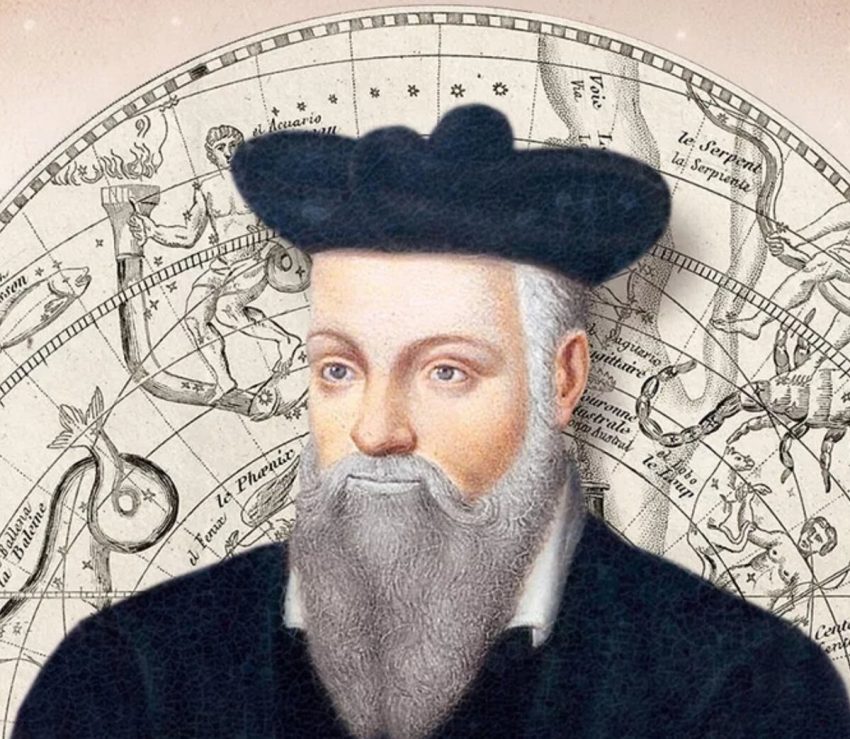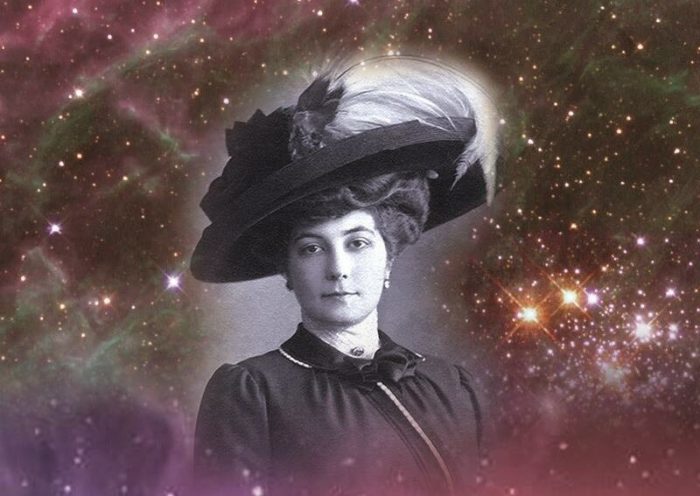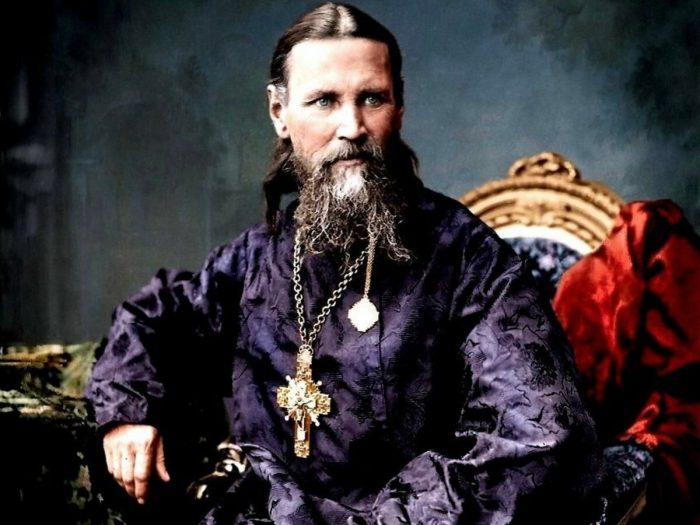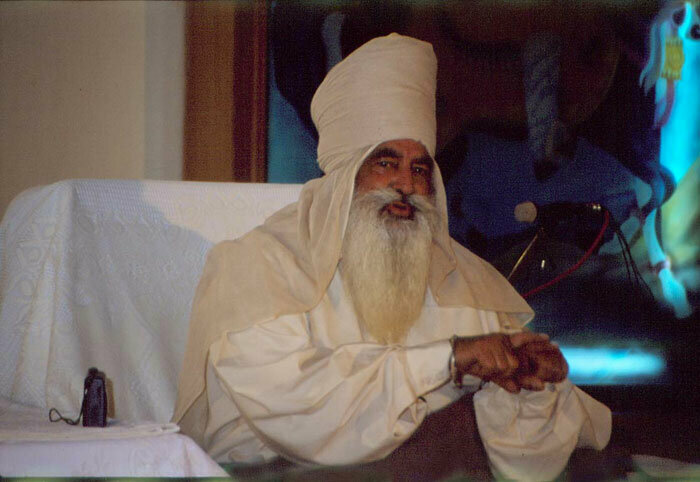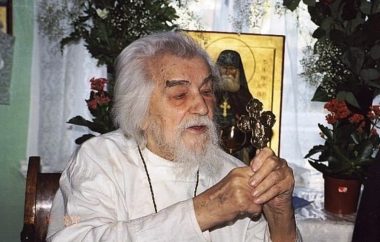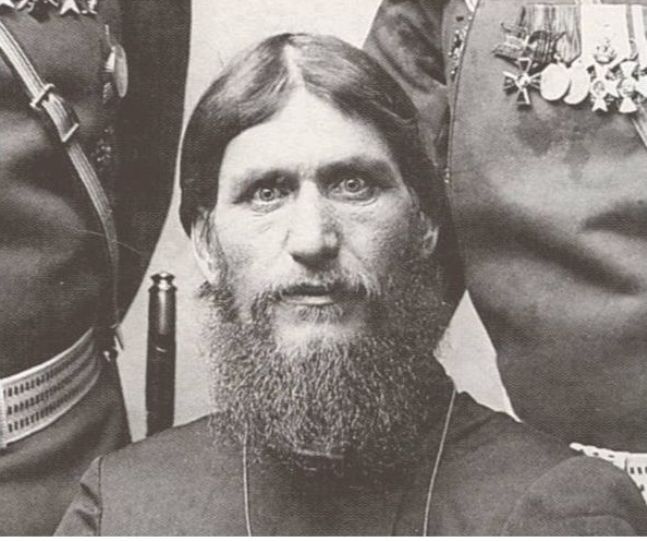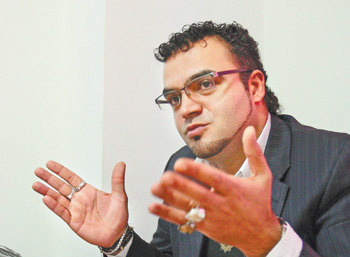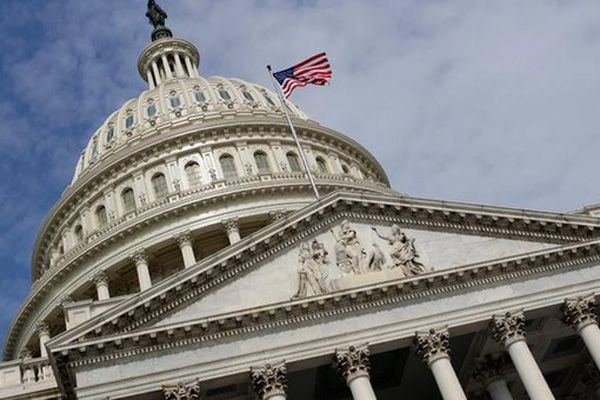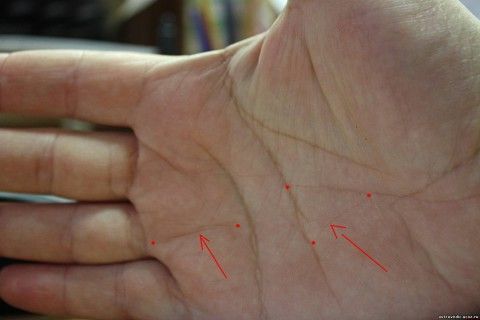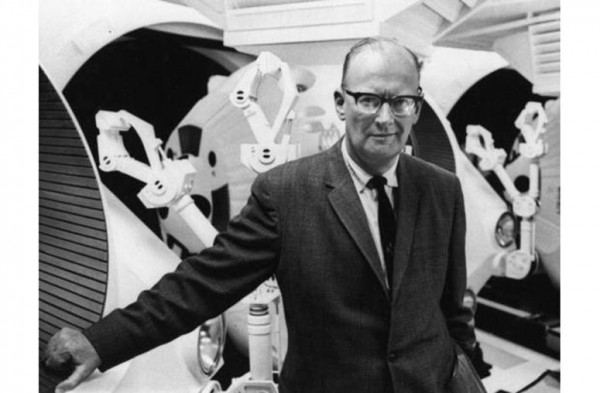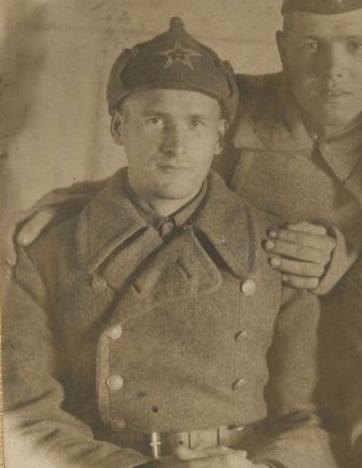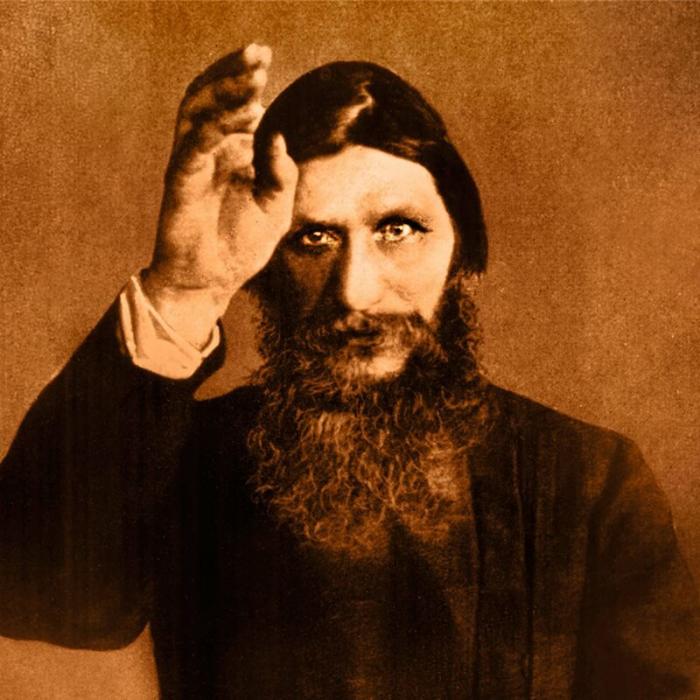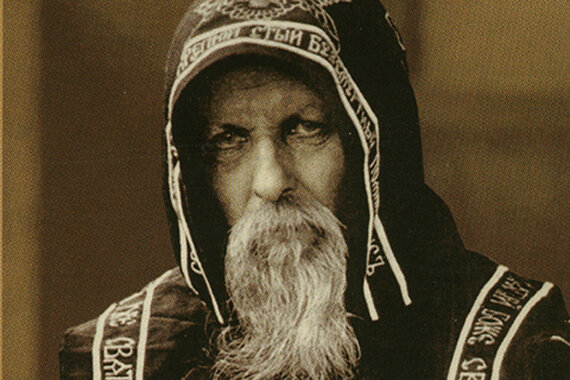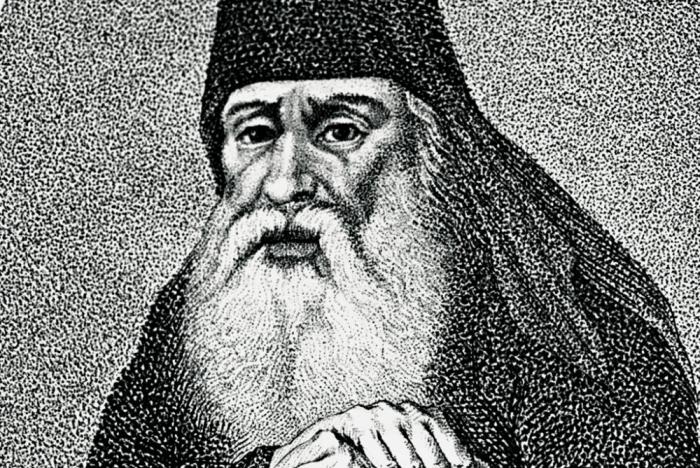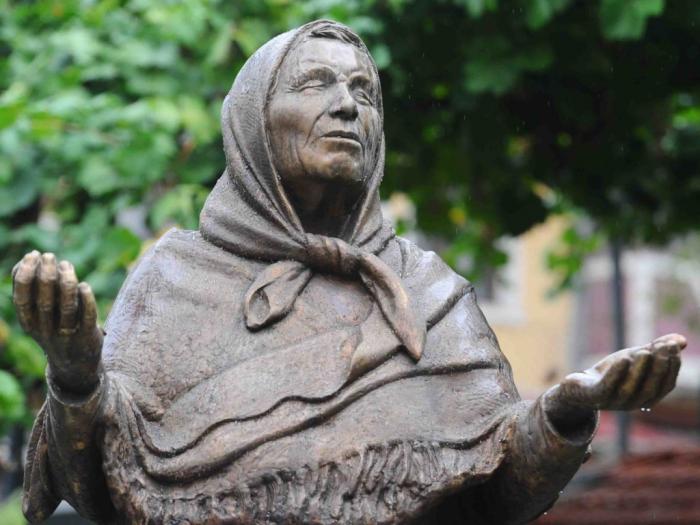Astrologers of the Soviet Union
Within the framework of the materialistic worldview, astrology was considered a pseudoscience.
In Soviet encyclopedias, they directly wrote: “Ancient pseudoscience based on the belief that the future of peoples, the fate of people can be predicted by the movement of the planets and their position among the constellations.” Nevertheless, it was recognized that astrology had a significant impact on the development of astronomy, many prominent astronomers (for example, Johannes Kepler) were engaged in it, but with a change in the picture of the world, faith in the power of this pseudoscience was undermined, and already in the 18th century astrologers disappeared completely. Soviet ideologists hurried – astrology continued to live. And not only in the countries of capitalist Europe, but also in the USSR itself.
The negative attitude of the Soviet authorities towards astrology was expressed not only in the prohibition of the publication of translations of Michel Nostradamus.
Under the conditions of the First World War, the revolutions of 1917 and the ensuing Civil War, Russian astrology began to decline, books on this topic ceased to be printed, occult magazines were closed. There has come a long period of oblivion of astrology in our country.
There is no reliable information that during the reign of Stalin in our country there was at least some kind of astrological tradition. Of course, pre-revolutionary books and magazines were still available in the 1920s, and any person, if desired, could get acquainted with the basics of theoretical astrology.
An excellent example of the fact that astrology at that time was not subjected to targeted persecution is the first edition of the Great Soviet Encyclopedia. In the article “Astrology” the reader could learn about the key concepts of astrology and even study the “natal chart” given as an example. The outstanding Russian scientist Alexander Chizhevsky, the founder of heliobiology, during these years not only studied the history of astrology and tested astrological concepts, but also freely published an article entitled “Modern Astrology” (“Spark”, 1926, No. 17), in which the basic concepts of astrology explained in natural language. However, not a single special astrological publication was published in the 1920s, and, moreover, there is no data on any practicing astrologer of that time.
Modern researchers of astrology love to tell a terrible tale that Stalin convened a congress of all Soviet astrologers in 1929 in Gelendzhik. Allegedly, all those who arrived at this congress were arrested and sent to a concentration camp. However, this story is not confirmed by archival sources and is most likely fictional.
The Mystery of Michel Nostradamus
Of all the astrologers, the most popular at all times was Michel de Notredam (Nostradamus), the illustrious author of the prophetic “Centuries”.
Michel de Notredam was born on December 14, 1503 in the small Provençal town of Saint-Remy. His father, Jomes de Notredam, was a notary, his mother’s name was Rene de Saint-Remy.
In 1518, Michel began his studies at the Faculty of Arts in Avignon, three years later he graduated from the faculty and received the degree of Master of Arts. Nostradamus said that from 1521 to 1529 he traveled a lot “in different lands and countries.” One way or another, but in 1529 he came to Montpellier and entered the medical faculty of the local university, where he received his doctorate around 1534. Then he again went on a trip – around Languedoc and Provence, working as an itinerant doctor. However, already in 1536 he settled in Agen, spending his free time in the company of his new friend and teacher, Jules Cesar Scaliger, a humanist and scientist. There, the young doctor started a family.
The year 1538 brought drastic changes in the life of Notre Dame. The plague killed his wife and two children. Almost simultaneously, the physician was ordered to report to the Inquisitor of Toulouse in connection with some of the statements of de Notredam. The young doctor found it necessary to leave Agen. The long period of wandering began again.
Nostradamus was seen in Venice, Turin and other Italian cities. In May 1544, the 41-year-old doctor took part in the fight against the plague in Marseille, then in Aix-en-Provence. For success in the medical field, the Parliament of Aix awarded Nostradamus a lifetime pension. In his memoirs, Nostradamus reported a recipe for a drug made from carnations, red roses and other plants, which he successfully applied in plague-ridden areas.
“Nostradamus was very proud of his book erudition. The composition of his personal library is indicative: it widely presents the works of ancient authors – Plato, Lucian, Martial, Titus Livius.
In 1547, Nostradamus settled in the Salon de Cros, where he married for the second time. There he continued to practice medicine, but in the late 1540s he took up astrology in earnest.
It should be noted that in the 16th century magic and astrology were inseparable from science. Historian Brendamour notes that “just as one could not talk about one’s medical career without mentioning an astrological career, one could not talk about an astrological career without making room for a medical career.”
After another trip to Italy, Notredam published the first predictive almanac for 1551. For the first time, the pseudonym Nostradamus appeared on the cover of this edition, under which other works of the famous soothsayer later appeared. It was to them that he owed his lifetime fame – with very rare exceptions, the topic of discussion among his contemporaries was precisely the almanacs, and not the Centuries.
The all-encompassing nature of his predictions also contributed to the glory of Nostradamus: the Astrologer was engaged in topical political prophecies affecting the position of churches, political forces and states. Of course, even before Nostradamus, political events were predicted, but only he turned his almanacs into a kind of periodical.
In 1555, Nostradamus received an invitation from the royal family to visit Paris. Queen Catherine de Medici, who had a passionate interest in astrology and predictions of the future, and her husband King Henry II invited the scientist to the royal residence.
In the palace, Nostradamus became the culprit of a scandal, during which the courtiers, irritated by his evasive answers, tried to detain the astrologer with the help of their lackeys. In addition, Nostradamus learned that he was to meet with the police, who wanted to know in more detail what kind of science he was doing, and whether it was connected with forbidden magic. This forced the soothsayer to leave Paris after ten days there.
At the beginning of the summer of 1555, Nostradamus released a book that was very different from all the previous ones that came out from under his pen. We are talking about the “Prophecies of Master Michel Nostradamus.” This book is a collection of prophecies about the future of the Earth, which has no analogues in the history of the occult, written in poetic form.
The prophecies of Nostradamus are written in a form that is rare for poetry. The book unites 10 centuries, each of which includes 100 quatrains (the 7th centurion remained unfinished), and each quatrain has its own serial number. All quatrains are united by a common meaning, given by the theme of the book, and poetic size – a pentameter, borrowed from ancient poets.
“The first edition of this book was preceded by a preface written in the form of an appeal to the son of the soothsayer Cesar, and contained 353 prophetic quatrains (quatrains), united in chapters – centuries – 100 quatrains each.
In 1557, Nostradamus published the second edition of this book – it contained 286 new quatrains and its total volume was already 639 quatrains in 7 centuries, the last of which contained 39 quatrains.
The first expanded edition of The Prophecies of Master Michel Nostradamus that has come down to us dates only to 1568 – it contained 302 quatrains (the total number of which grew to 942) in 10 centuries, as well as a large prose prophecy written in the form of a letter to the King of France, Henry II.
What are the famous prophecies of Nostradamus? Here is what Nostradamus himself writes in a letter to his son Cesar: “I decided to tell in dark and mysterious terms about the changes in the fate of mankind, at least the most important ones, without offending their fragile feelings.”
Indeed, for an unprepared reader, the content of the quatrains looks simply incomprehensible. If someone hopes, having briefly read the original text of the Prophecies or a good translation of them, to get a clear idea of what and when the world expects in the future, he is greatly mistaken. First of all, it is very difficult to make a qualitative translation of these predictions, since quatrains abound with anagrams, newly formed words of Greek, Latin and Provencal origin, abbreviations and expressions that are now out of use, as well as special and accidental typos. In addition, Nostradamus, with very rare exceptions, did not date his predictions – only 14 indicated dates are found in the entire volume of prophecies.
The serious attitude of contemporaries to the “Prophecies” predetermined one important event for Europe, which seemed to have been accurately predicted by the famous astrologer.
On July 1, 1559, in honor of the wedding of King Philip II of Spain and the daughter of Henry II, Elizabeth, a jousting tournament was held. Captain Gabriel Montgomery of the Scots Guards and the king himself took part in it. A fragment of Montgomery’s spear fell into the slot of the royal helmet, pierced the eye of Henry II and caused him a severe brain injury. On July 10, the king died in terrible agony.
One of the quatrains of Nostradamus, published in the 1555 edition of the Prophecies, was interpreted as a prediction of this sad event:
“The young lion will defeat the old
On the battlefield in a duel.
In a golden cage, he will gouge out his eyes.
Of the two fleets – one, then die a painful death … “
“Although this quatrain is often mentioned by the admirers of Nostradamus as indisputable evidence of his prophetic gift, there is no reason to associate it with what happened on July 1, 1559. First, there is no satisfactory explanation for the golden cage. Secondly, the quatrain is clearly talking about gouging out both eyes. Thirdly, the word “fleets” in the last line is completely unrelated to the story of the death of Henry II
Nostradamus himself claimed that another quatrain points to the death of Henry. In the almanac of 1562, he published a message to his friend Jean de Vozel, who, according to Nostradamus, correctly understood many of his prophecies, such as, for example: “In the year when one eye rules in France, the seed of Blois will kill his friend” .
And so with any other quatrain. No matter how many interpretations and interpreters there are, sooner or later, over time and with a change in the situation, new interpretations of the same prophecies appeared, which are tailored to a specific task. Since the authority of Nostradamus as a soothsayer only grows over the years, there are those who want to use his authority for selfish purposes. The Prophecies were especially honored in the 20th century, when Europe experienced an era of devastating upheavals: a series of revolutions associated with terror and two world wars that claimed millions of lives. It was during this era that the “Prophecies” of Nostradamus began to be used as an instrument of ideological warfare.
Nostradamus in Russian
The most significant surge in the number of publications devoted to deciphering the “Prophecies” occurred in the 1920s.
“Premonition of great blood” can be traced in works about Nostradamus since the beginning of the 20th century. The newest interpreters of Nostradamus firmly took the position that “the prophecy must be gloomy.” In fact, many predictions of the famous astrologer were of a pronounced ominous nature, and one can imagine the future of mankind as a chain of continuous wars.
Nostradamus and his prophecies became especially popular in Germany, where even a separate direction of “Nostradamology” was born. Something similar was observed in France, where traditional works continued to appear.
Then the famous astrologer came to Russia. One of the first works about Nostradamus published in Russian was an article by the historian Lev Platonovich Karsavin “On Freedom”, published in 1922 in the journal of the Philosophical Society “Thought”.
In it, Karsavin raised a fundamental question that sooner or later confronts every researcher of the phenomenon of prophecy in general and the prophecies of Nostradamus in particular: is there a future? The Church gives a negative answer – each person creates his future by a set of actions. From this point of view, statements about predestination are deeply erroneous and even sinful, the future is entirely in the hands of the Creator and depends on the behavior of individuals and entire nations. To know the future is not given to almost anyone, except for the elect. Accordingly, Nostradamus is either a charlatan or a false prophet.
“Karsavin, however, approaches the issue not from the point of view of the church, but from the point of view of faith. “Religion refers to instances of prophecy and visions of the future
Then Karsavin cites several documented cases of prophecies – mostly made by mediums in a state of hypnotic trance. Having thus proved that the prophecy is not charlatanism and not a delusion, the scientist proceeds to the story of Nostradamus and analyzes nine “come true” quatrains.
Karsavin adheres to the point of view according to which Nostradamus could see future events in a kind of somnambulistic dream, without losing, however, communication with the outside world. Dates Nostradamus could clarify with the help of astrological calculations.
Karsavin’s article played a significant role, opening the name and work of Nostradamus to the Russian thinking reader. Among other things, the scientist identified in it the main secret of the prophet – how did he see the future?
Karsavin was a representative of the mystical-occult direction in Nostradamology. His work had a close connection with the books of the German Nostradamists of that time: Wöllner, Loog and others, who attached great importance to the “mediumistic” revelations of Nostradamus. This commonality is quite understandable, given the similarities in the fate of Kaiser’s Germany and Tsarist Russia after the First World War. The collapse of the empire, revolutions and rebellions, general instability pushed wide circles of the intelligentsia into mysticism.
“Both in Soviet Russia and in white émigré circles, Nostradamus was interpreted in a negative sense for the future of the Bolsheviks. In the early 1920s, a small book was published in the USSR containing selected quatrains and excerpts from the prose predictions of Nostradamus. Almost immediately, it was withdrawn from sale and destroyed. Vyacheslav Zavalishin recalled: “When my parents, father and mother, were arrested in Yezhovshchina, they confiscated a small book about Nostradamus with a translation into Russian of quatrains and fragments of two apocalypses, published in the early twenties. This book was recognized as an anti-Soviet pamphlet under the guise of medieval scholasticism … “”
Any mention of Nostradamus was carefully monitored.
““… The fate of the works of Nostradamus in Russia in the second half of the 20th century. very indicative, – says the researcher of the French astrologer Alexei Penzensky. – The Soviet people did not need unhealthy sensations, and therefore the Prophecies were banned for reprinting and deleted from the list of scientific research topics for a long time. One of the few references to Nostradamus in the literature of those years can be found in G. Gurev’s book The History of a Delusion – Astrology before the Court of Science, published in 1970 in Leningrad and aimed at defeating astrology as a social and scientific phenomenon. “
“Of course, the prophecies of Nostradamus are not even quoted – why? The book was published by the most scientific publishing house, Nauka, and the scientist’s opinion is quite enough. Gurev’s note is a vivid example of an attempt to manipulate public opinion. The books of Nostradamus were not published in the USSR, and, according to the author, on a blank sheet of public opinion one could write whatever the powers that be wanted. Literature on astrology, which came to the largest Soviet libraries from abroad, immediately ended up in special storage departments. This fate did not escape the books of foreign Nostradamologists. V. Zavalishin, the author of the first Russian translation of the Prophecies, complains that he could not even get acquainted with the old, non-anti-Soviet editions of the works of Nostradamus: When I collected material about Nostradamus, I tried – not on my own behalf, and on behalf of influential connoisseurs of medieval culture, to obtain photographs from the rare books I needed, stored in various libraries of the Soviet Union. All my efforts, much to my chagrin, turned out to be in vain … However, the translation (more precisely, a free retelling) by V. Zavalishin nevertheless saw the light, but, of course, not in the USSR, but in the USA … “”
By the way, Vyacheslav Zavalishin set himself a very specific task: with the help of “Prophecies” to prove that most of Nostradamus’s quatrains are dedicated specifically to the twentieth century and the upheavals of Russia. Here is how he translated quatrain 2-10:
“I am sad to say that cruel eras
They will again take possession of the rebellious land,
And a slave atmosphere will reign
Under the guise of love and freedom, a big … “
Why not an indication of the emergence of totalitarian regimes in the twentieth century?
And here is the prediction of the revolution and the Civil War:
“I see royal thrones crumbling,
When they are swept away by a human hurricane.
The Republic will be worse than the crown.
Both whites and reds are a cruel deception … “
“Further more. Zavalishin was the first to draw attention to the famous prophecy about 73 years and 7 months, applying it to the future of the USSR. Here is what he says: “If we take into account that this prophecy is directly related to the October Revolution in Russia in 1917, then we must agree that the beginning of the collapse of the orders generated by this revolution should be attributed to 1991. The Russian revolution will finally become obsolete in 2025. Can this be trusted? Only those readers who open the Centuries between 1991 and 2025 can answer this.” Zavalishin’s prophecy came true – the state generated by the “Russian revolution” was indeed destroyed in 1991. “
Almost immediately after the publication of Zavalishin’s book in the West, the journal “Knowledge is Power” (No. 6, 1975) published an article by E. O. Brezin “Nostradamus – the son of his age.” In it, the author spoke about the life and fate of Nostradamus, as well as his prophecies. The article is sustained in a skeptical spirit, and this is understandable – the Soviet press, especially the central one, would not miss anything else. For the first time in many years, a series of quatrains and even a portrait of Nostradamus, borrowed from the 1605 edition, were published in the article. Brezin’s Nostradamus looks like a self-confident astrologer with a claim to the title of a prophet, whose predictions, as a rule, did not come true. But the predictions of Nostradamus about the development of technology (submarine fleet, aviation, astronautics, optics) deserve attention along with the brilliant insights of Roger Bacon and Leonardo da Vinci. In this way, Nostradamus was put on the same level with the authors of socio-technocratic utopias. Of course, Brezin did not say anything about the possible connections between the prophecies of Nostradamus and modern history …
The article, obviously, became a kind of response to Zavalishin’s book, which by 1975 had already penetrated the Soviet samizdat. Whether Brezin wanted it or not, his article contributed to a surge of “underground” interest in Nostradamus in the USSR already in the mid-1970s. However, there was no continuation. Only in 1988, other articles about Nostradamus appeared in the journals “Science and Life”, “Knowledge is Power”, “Science and Religion”, subsequently published as a separate book …
Astrology in the USSR
The negative attitude of the Soviet authorities towards astrology was expressed not only in the prohibition of the publication of translations of Michel Nostradamus.
Under the conditions of the First World War, the revolutions of 1917 and the ensuing Civil War, Russian astrology began to decline, books on this topic ceased to be printed, occult magazines were closed. There has come a long period of oblivion of astrology in our country.
There is no reliable information that during the reign of Stalin in our country there was at least some kind of astrological tradition. Of course, pre-revolutionary books and magazines were still available in the 1920s, and any person, if desired, could get acquainted with the basics of theoretical astrology.
An excellent example of the fact that astrology at that time was not subjected to targeted persecution is the first edition of the Great Soviet Encyclopedia. In the article “Astrology” the reader could learn about the key concepts of astrology and even study the “natal chart” given as an example. The outstanding Russian scientist Alexander Chizhevsky, the founder of heliobiology, during these years not only studied the history of astrology and tested astrological concepts, but also freely published an article entitled “Modern Astrology” (“Spark”, 1926, No. 17), in which the basic concepts of astrology explained in natural language. However, not a single special astrological publication was published in the 1920s, and, moreover, there is no data on any practicing astrologer of that time.
Modern researchers of astrology love to tell a terrible tale that Stalin convened a congress of all Soviet astrologers in 1929 in Gelendzhik. Allegedly, all those who arrived at this congress were arrested and sent to a concentration camp. However, this story is not confirmed by archival sources and is most likely fictional.
The only reliable data on astrology in the USSR during the period of Stalin’s autocracy concern the Baltic republics. In the 1930s, these countries were not yet part of the Soviet Union, and the practice of astrology was treated with less suspicion in them than in the “state of workers and peasants.”
In the Baltics, astrological literature had a fairly wide circulation. At this time, Nikolai Kallert from the Latvian city of Ogre began to study astrology from German books – after the legalization of astrology in the USSR in the 1980s, Kallert was elected honorary president of the Interregional Federation of Astrologers. Another successor to the traditions of German astrologers was Martynas Juodvalkis, one of the oldest Lithuanian astrologers, who spent about 20 years in Soviet camps for his studies.
During the “Khrushchev thaw”, the Soviet people had some freedom in the spiritual sphere, and the result was the first sprouts of interest in astrology in the 1960s. So, in 1972, the book by Romualdas Kolonaitis was published “The Sun Walks in the Animal Circle” about the symbolism of the signs of the Zodiac. By the beginning of the 1970s, circles of astrologers already existed in Moscow, Kyiv, Kharkov, Leningrad, and Vilnius. Of particular note is the activity of the Moscow circle, in which classes were based on materials obtained as a result of contacts with Bulgarian astrologers. Among these materials, the works of Dane Rudhyar, translated into Russian by Mikhail Papush, played an important role. It was from this circle that a number of leading metropolitan astrologers of our day came out …
Astrology was banned in the USSR, but Soviet futurology flourished, relying on the ambitious promises of Soviet leaders. No totalitarian regime can tolerate the existence of people whose specialty is predicting the future. He deals with such people first of all. The monopoly on prophecy remains only with the ruling elite. Let us recall, for example, Nikita Khrushchev’s “prophecy” about the triumph of communism in the USSR in 1980…
